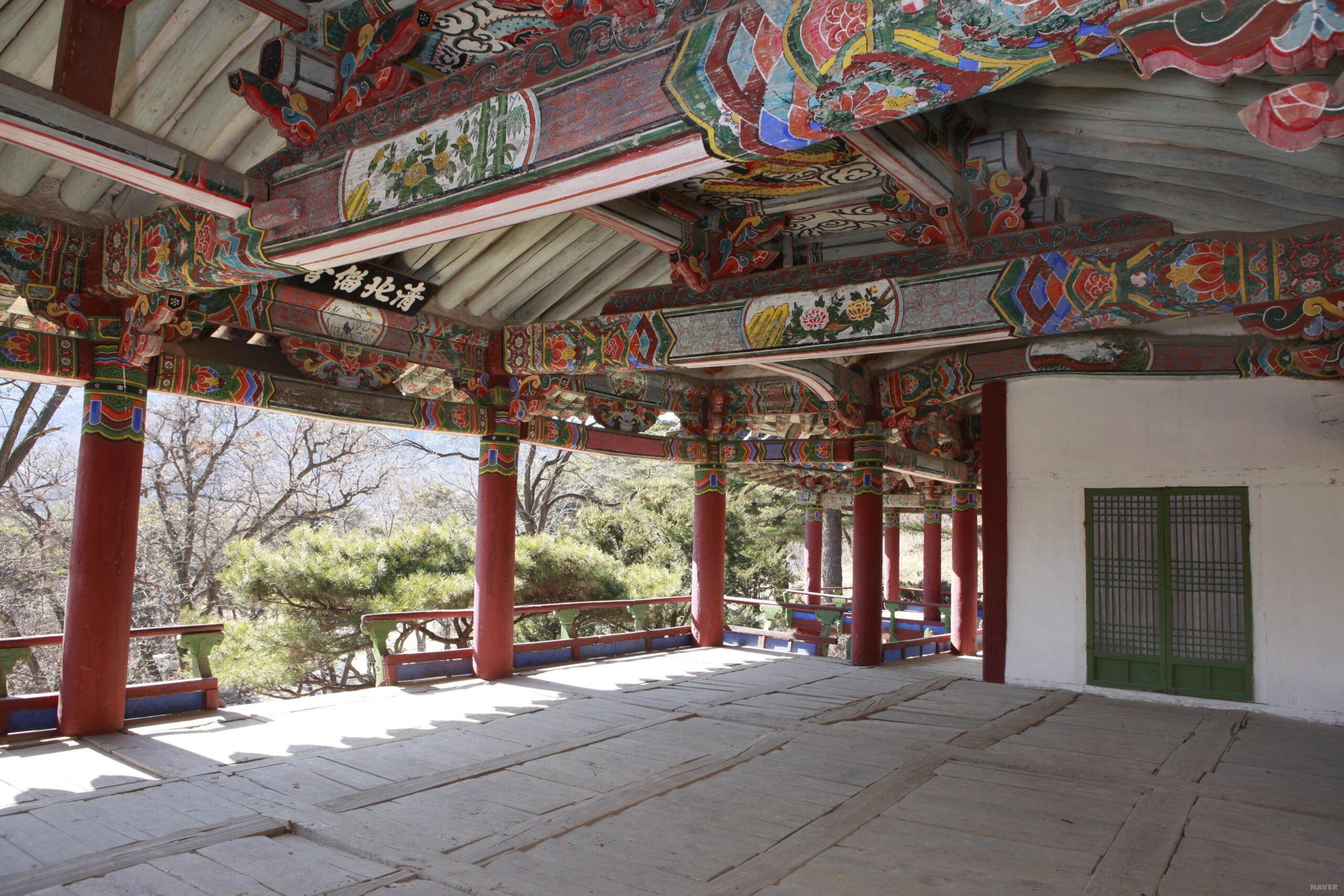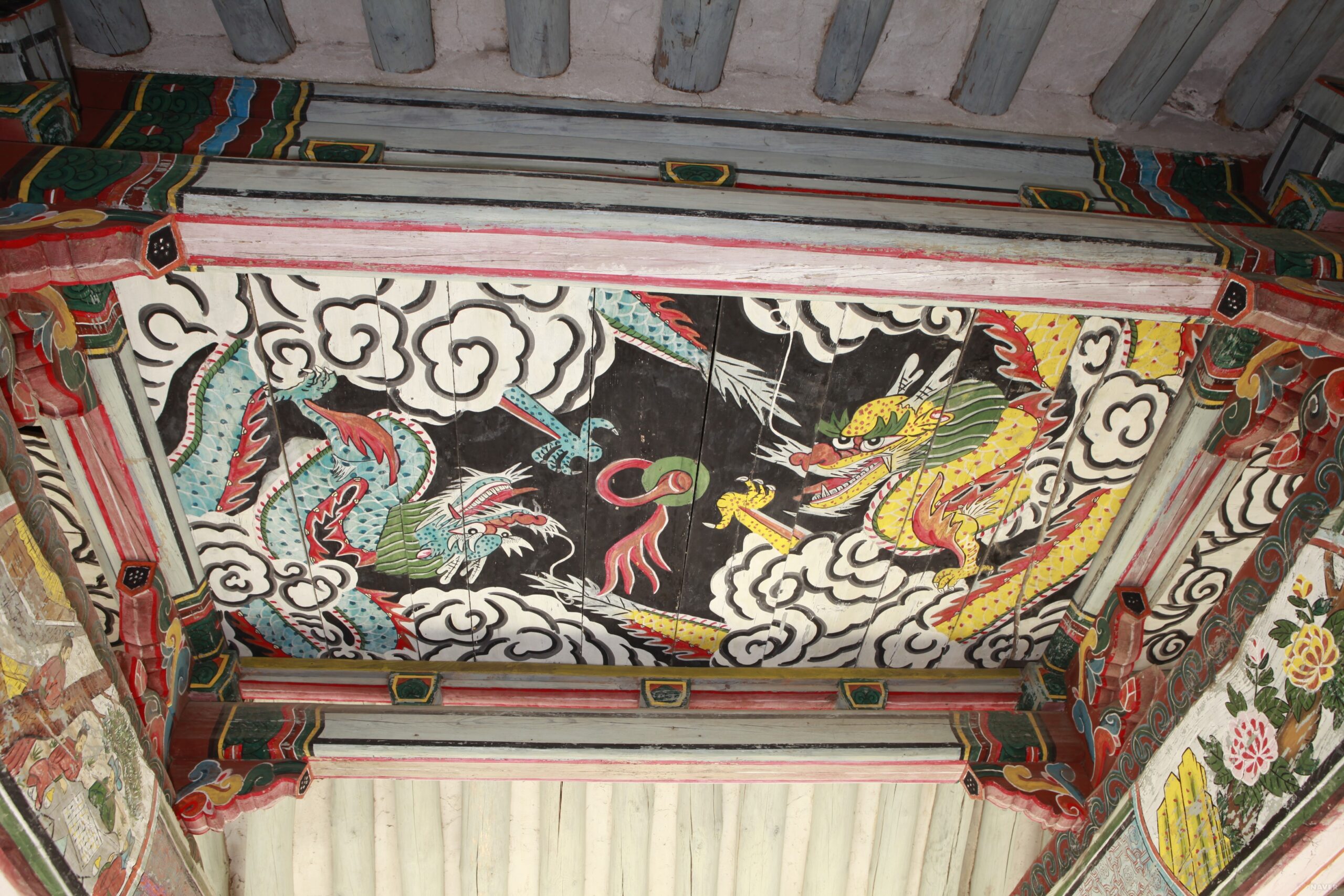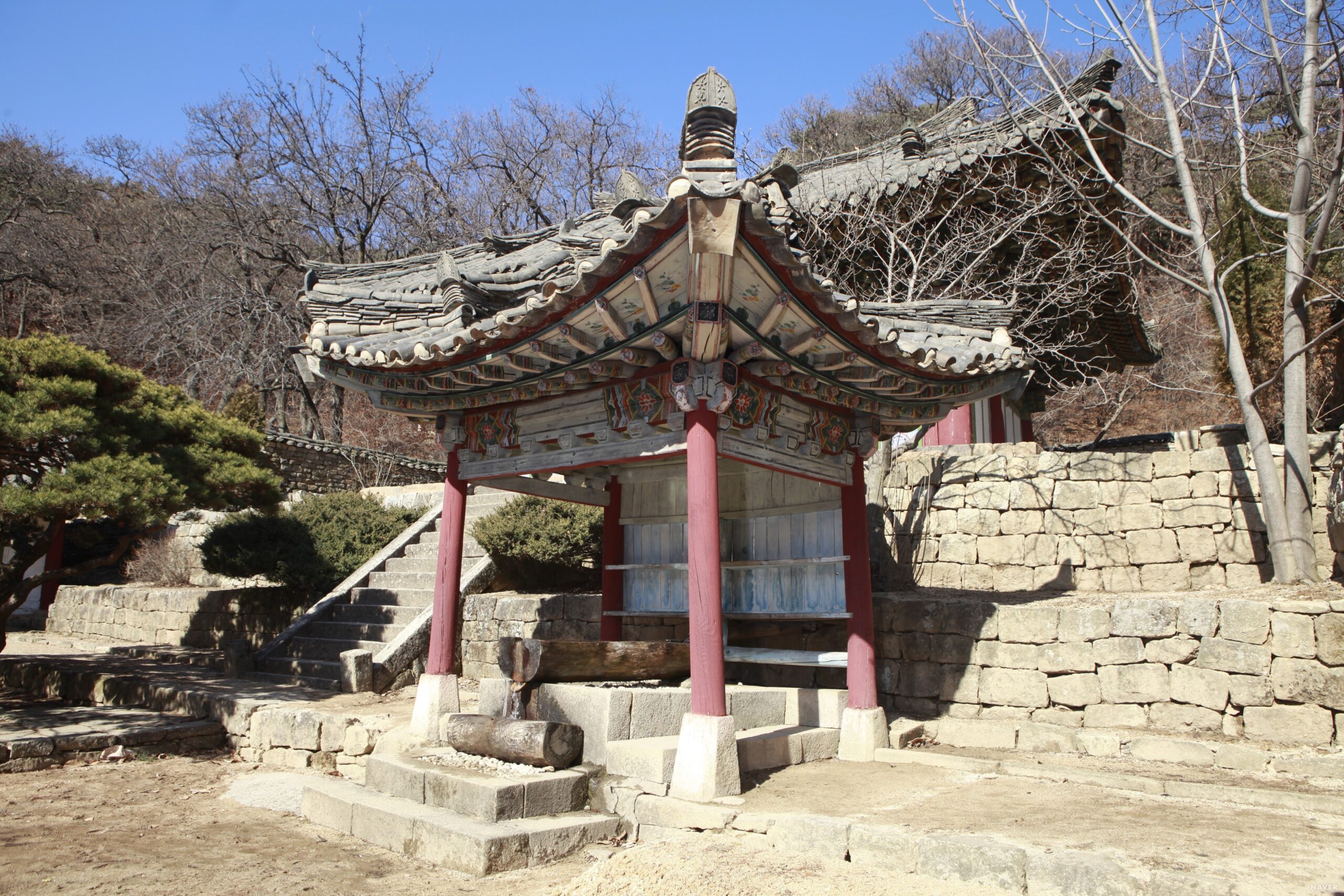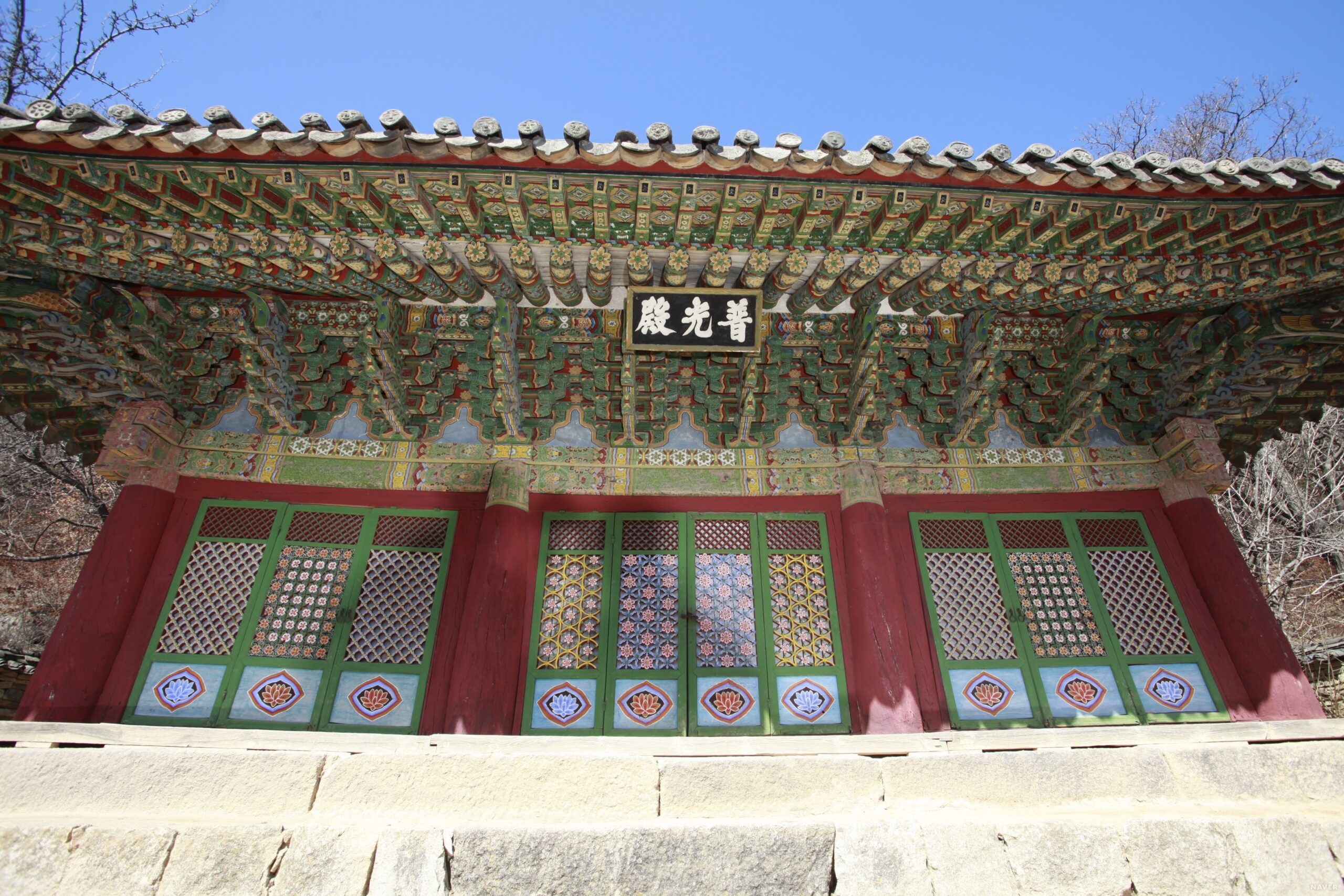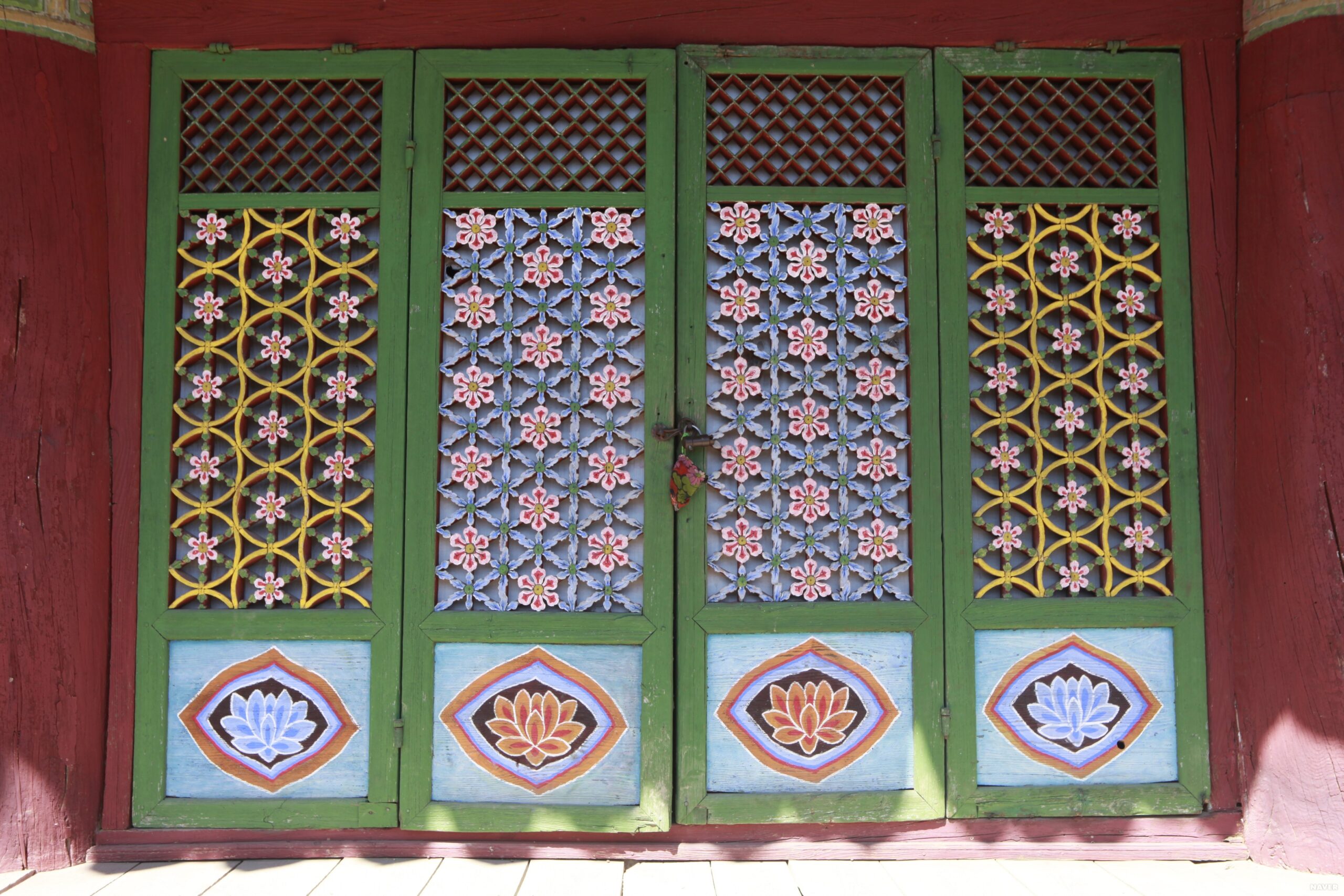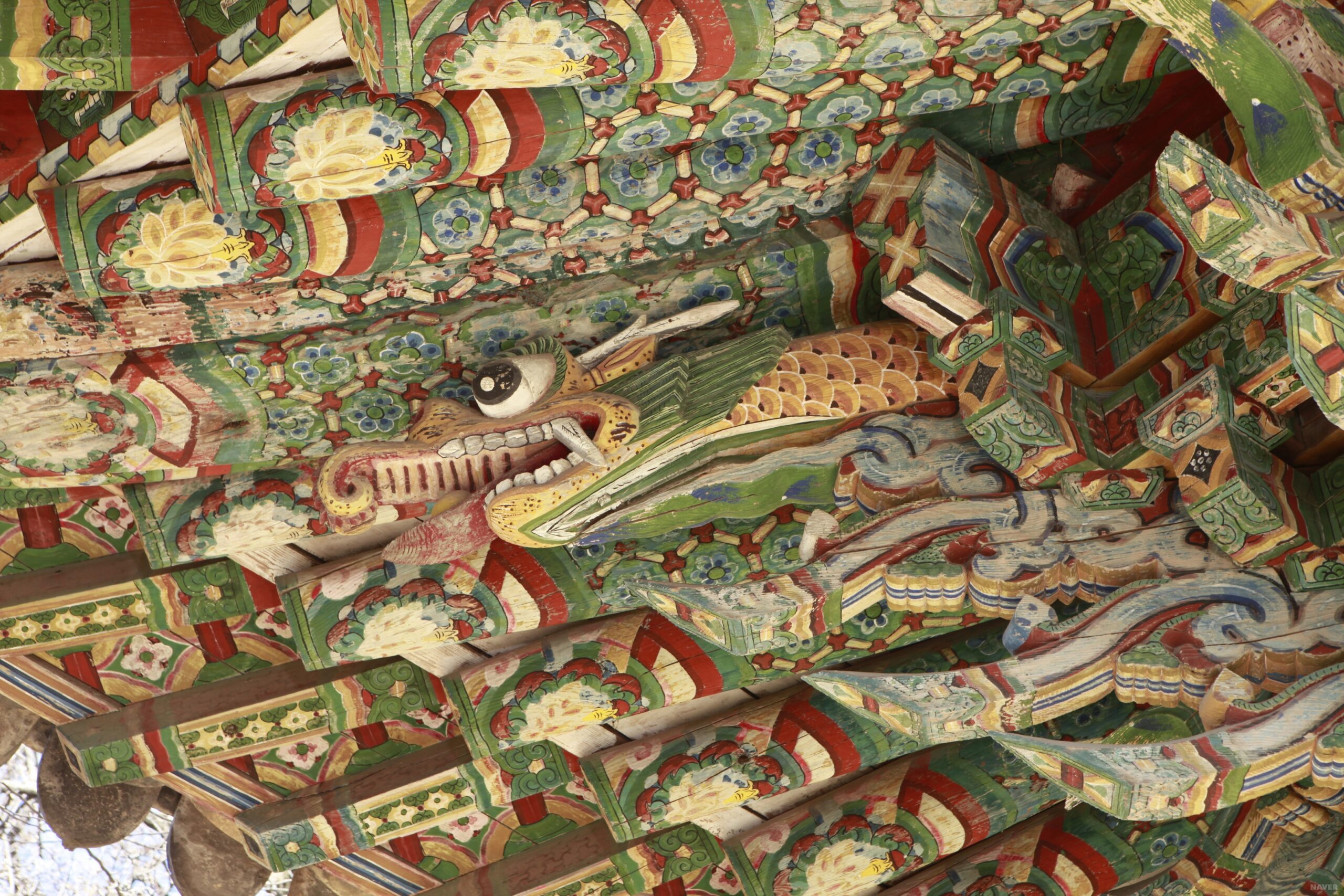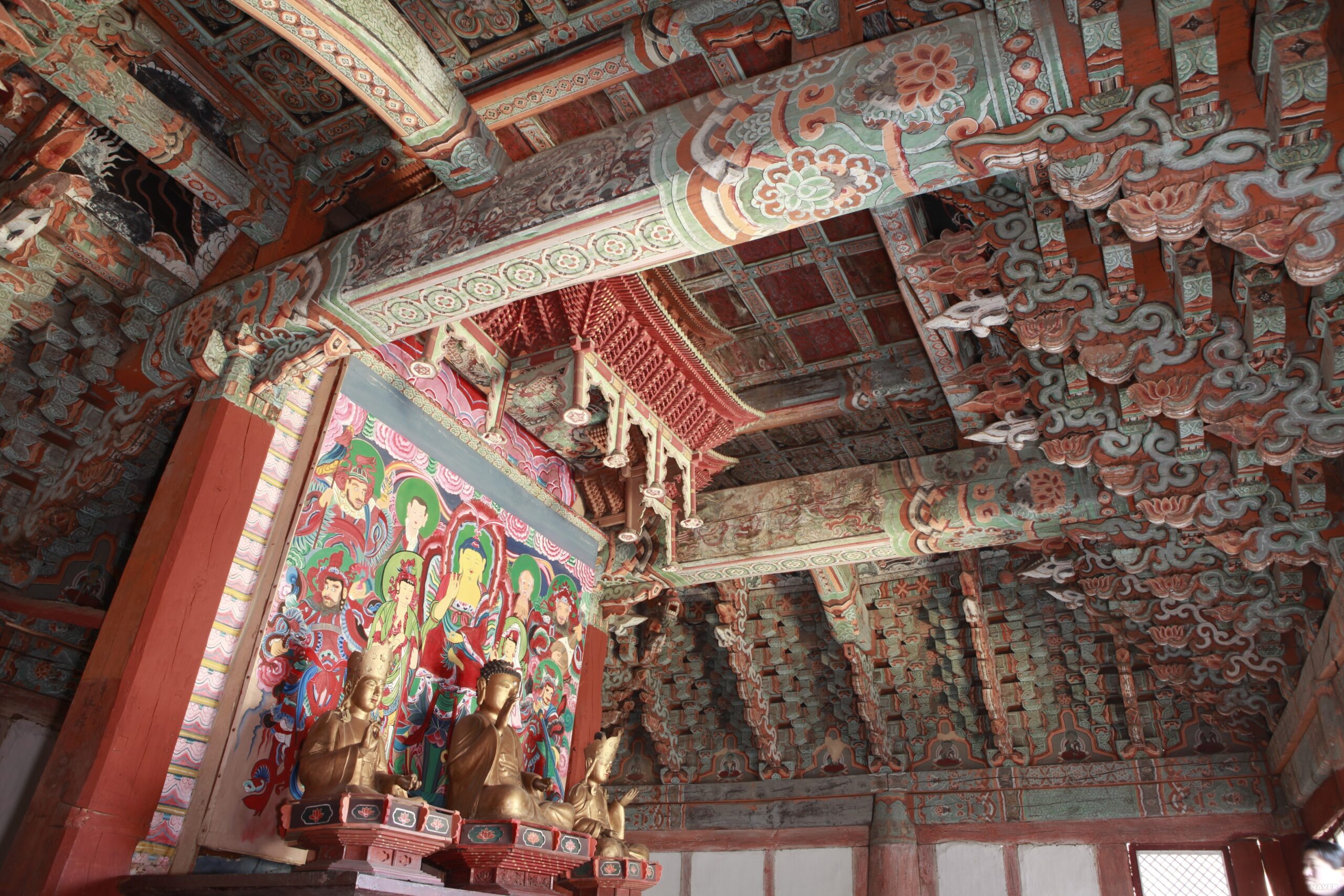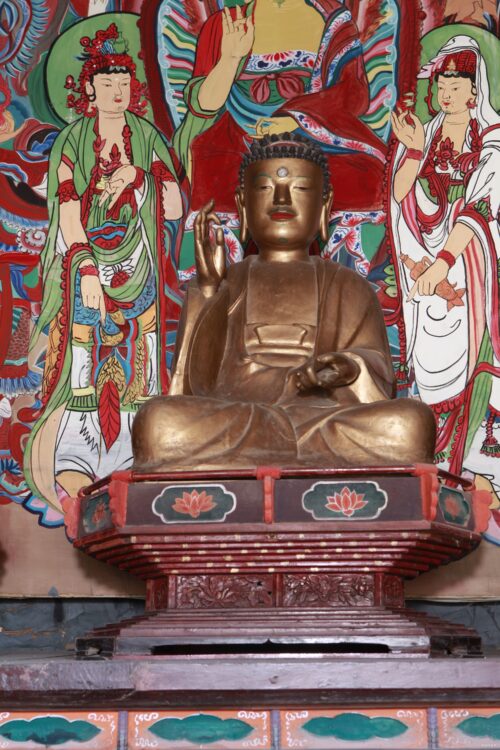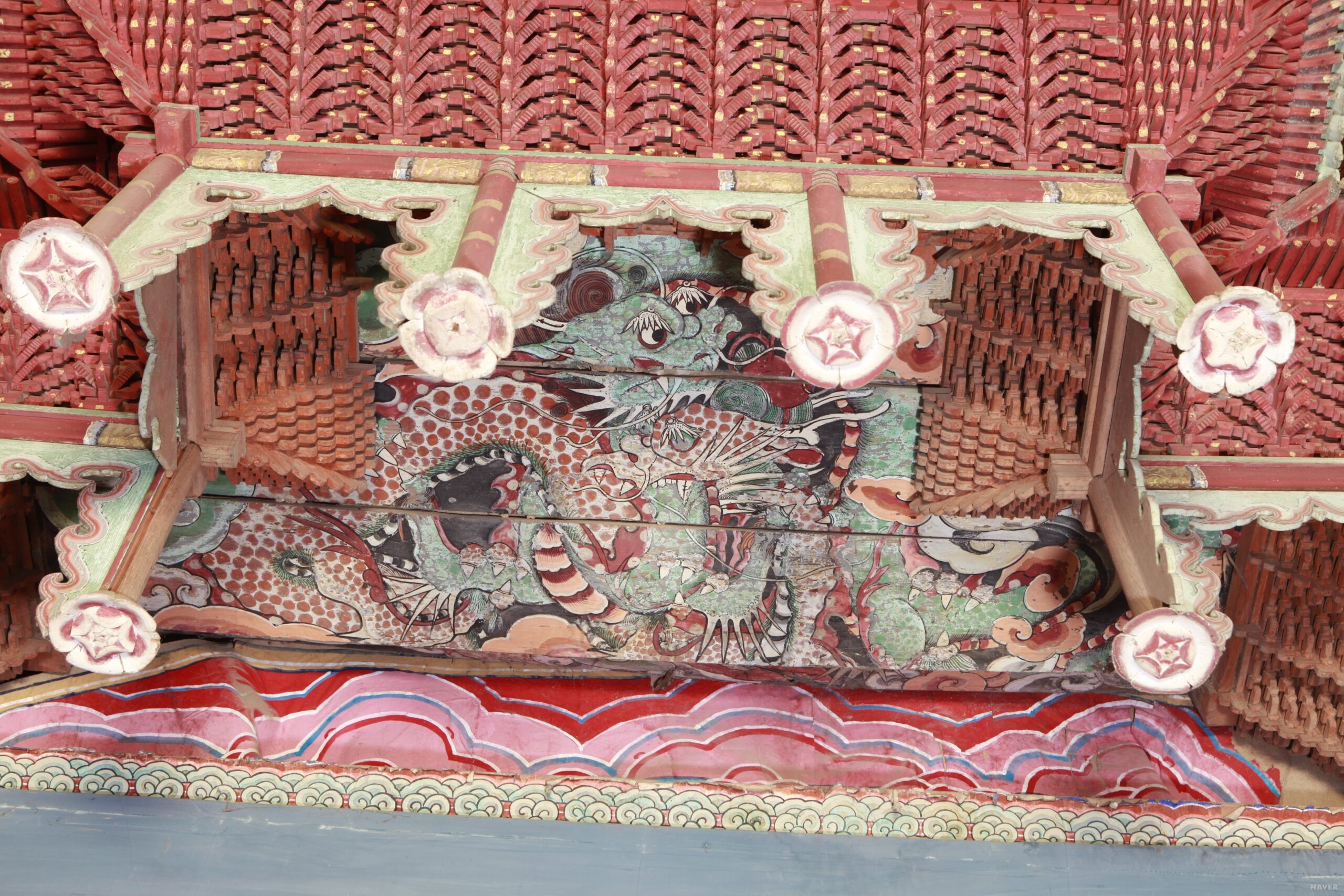Chonjusa Temple – 천주사 (Yongbyon, Pyonganbuk-to, North Korea)
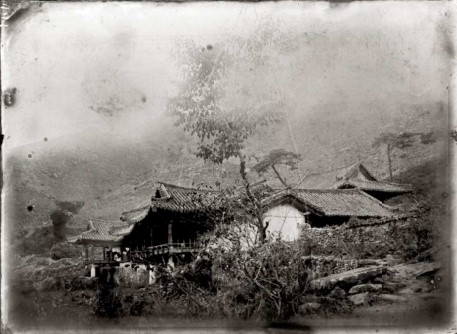
Temple History
Chonjusa Temple [Cheonjusa Temple] is located on the southern slopes of Mt. Yaksan in Yongbyon, Pyonganbuk-to, North Korea. And for some of this article, it should be noted, that the spelling of North Korean places will use the North Korean style of spelling. The location of the Chonjusa Temple has long been considered one of the Eight Scenic Views of Gwanseo. The present Chonjusa Temple was founded in 1684, while rebuilding the inner fortress on Mt. Buksan. However, it’s believed that Chonjusa Temple existed before 1684, but it fell into disrepair. Chonjusa Temple was then later rebuilt in 1722.
While once larger in size, the temple now only consists of the Pogwang-jeon Hall [Bogwang-jeon Hall], the Chonju-ru Pavilion [Cheonju-ru Pavilion], and the monks dorms and storage area. Written on one of the pillars of the Pogwang-jeon Hall, it states that it was constructed in May, 1722. While there have been repairs done to the Pogwang-jeon Hall [Bogwang-jeon Hall] more recently, the main hall at Chonjusa Temple still retains its original appearance and beauty.
Chonjusa Temple is North Korean National Treasure #46.
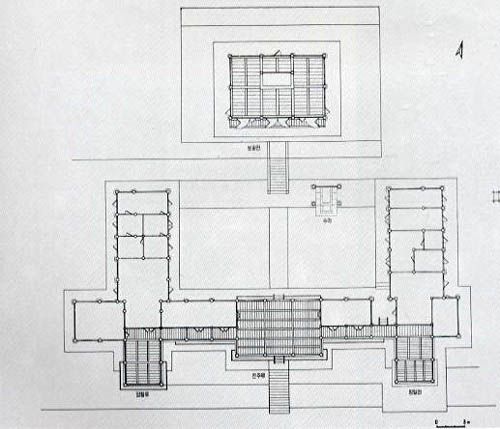
Temple Layout
When you first approach Chonjusa Temple, the first thing you’ll notice is the front facade of the temple with its two pavilions jetting outwards and a central pavilion resting back somewhat from the other two book-ending pavilions. The central pavilion is known as Chonju-ru Pavilion. It’s an open design with an elevated wooden floor that people need to pass through to gain entry to the rest of the temple grounds. The ceiling of the Chonju-ru Pavilion is adorned with beautiful dancheong colours and a blue and yellow dragon emerging from the depths of angry clouds. There are other images adorning the interior of the Chonju-ru Pavilion like floral patterns and the Taoist Immortals, or “Sinseon” in Korean. To the left and right of the central Chonju-ru Pavilion are a pair of wooden pathways that lead to the two protruding pavilions. The pavilion to the left is known as the Mangwol-dae Pavilion and the pavilion to the right is known as Hyangil-Heon Pavilion. Both adjoining pavilions are adorned with floral paintings and intricate woodwork, as well as beautiful dancheong.
Having passed through the central Chonju-ru Pavilion entryway, you’ll now find yourself standing in the compact temple courtyard. To your immediate right and left are the monks’ dorms and storage building. And just below the Pogwang-jeon Hall [Bogwang-jeon Hall] is the Su-gak, which is a water pavilion.
As for the the main hall, the Pogwang-jeon Hall [Bogwang-jeon Hall], it has beautifully preserved Geumdancheong around its exterior walls and up in the eaves. As for the front doors of the Pogwang-jeon Hall, the latticework is adorned with intricate and colourful floral patterns. Stepping inside the Pogwang-jeon Hall, the intricate woodwork and dancheong colours continue up in the eaves of the main hall. The main altar triad sits beneath a red datjib (canopy) with a blue dragon painted on the underside of the canopy. As for the main altar triad, there’s a seated image of Seokgamoni-bul (The Historical Buddha) in the centre. This central image is joined by Munsu-bosal (The Bodhisattva of Wisdom) and Bohyeon-bosal (The Bodhisattva of Power). If you look close enough at these statues of these two Bodhisattvas, you’ll notice that they both wear unique crowns. Take your time and look all around the interior of the Pogwang-jeon Hall because the bracket work and colours are stunning.
How To Get There
For now, in today’s political climate, you don’t. But hopefully one day soon we can. Below is a map of where to find Chonjusa Temple in Yongbyon, Pyonganbuk-to, North Korea.
Overall Rating: 8/10
There are a couple highlights to Chonjusa Temple. The first, and right at the entry, is the Chonju-ru Pavilion. Both the central pavilion and its two off-shoots are all stunning both inside and out. From their intricate woodwork to their delicate paintings, it’s uncommon to find a pavilion like this at any temple whether it’s in North or South Korea, especially if it’s a historic temple. The other main highlight is the Pogwang-jeon Hall [Bogwang-jeon Hall] with its beautiful dancheong and intricate bracket work both inside and outside the main hall. Hopefully one day soon we’ll all get to see this beautiful temple up-close.
Historical Pictures of Chonjusa Temple
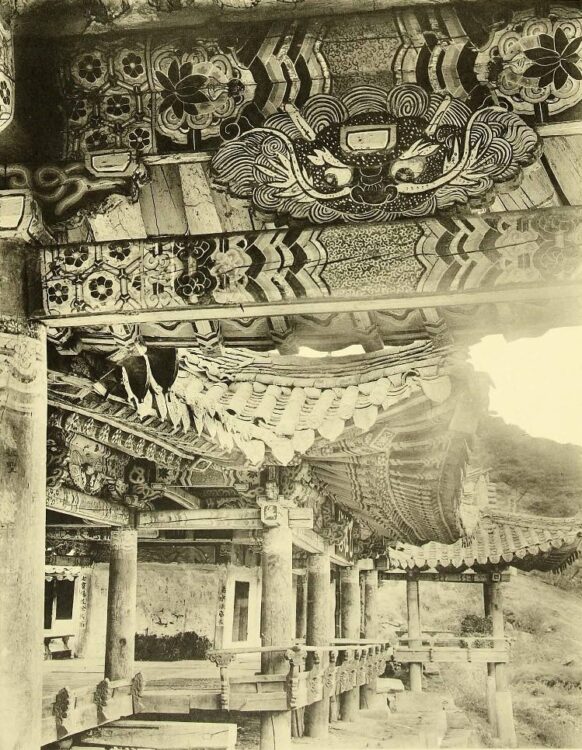
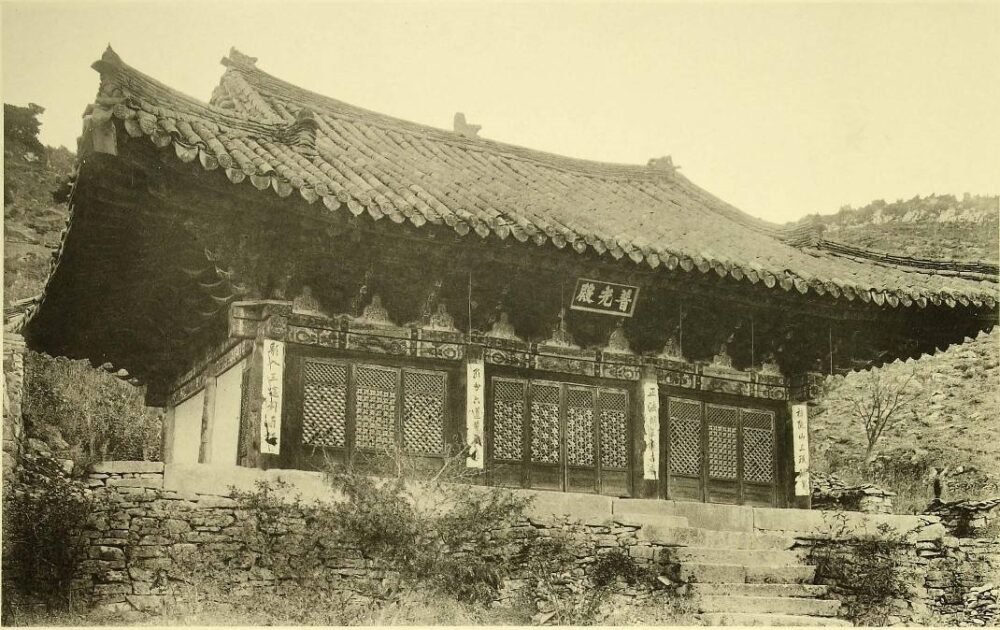
Chonjusa Temple Now


